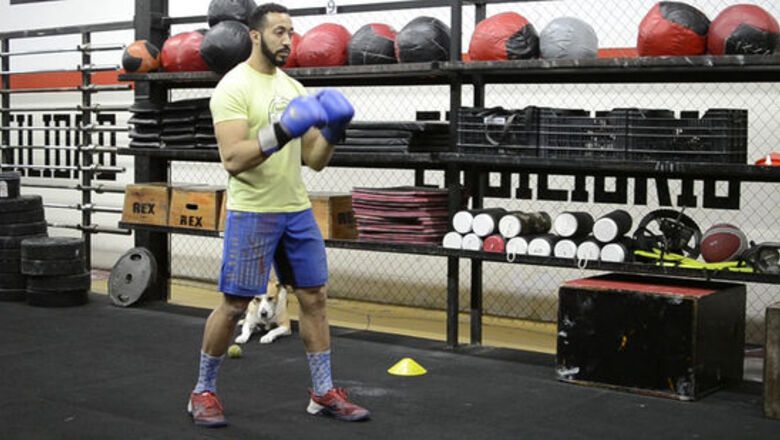
views
Mastering the Basics
Get in the boxing stance. We'll use the left jab throughout this article -- for the right jab, everything is reversed. So for now, place your left foot in front of your right, with your feet angled in slightly, but still pointing toward your opponent. Put your hands up to protect your chin, tuck your elbows down, keep your chin down, and make sure your hips are above your feet. It's important that you keep your body and hands relaxed. Have a slight bend at your knees and bring up your back heel just a bit. Bounce around, getting comfortable in the stance. Make sure your feet are around shoulder width apart and your front foot is pointing mostly forward and your back foot is pointing mostly out. Whatever foot is forward is the hand you're jabbing with. The jab is a punch that comes straight out, being closer to your opponent than the cross.
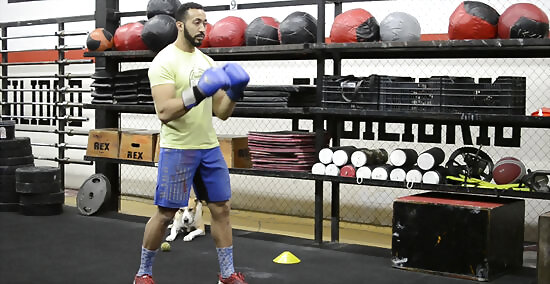
Lean forward with your elbows in and your right hand a little higher than your left. Your right is protecting your chin, playing defense, while your left is up, waiting to strike. If you are taller than your opponent and it is unlikely that he will pull off a straight right to your face, you can keep it low for greater power and visibility. Otherwise, keep it at your chin ready to parry or block. You're in the optimum position right now for your jab. Now while the jab comes from your core and not your arm, it is important not to launch yourself with the jab. You won't get a better punch for it. You should feel a slight, natural rotation, but that's it.
Transfer your weight forward and jab. Simultaneously shift off your back (right) foot (but don't let it come off the ground) and put your weight onto your left, while throwing your left arm into a quick, powerful jab. Twitch your entire left side forward while ever so slightly lifting the heel of your left foot. As your hand comes forward, your body's weight should come forward at the same time. Keep your chin tucked in behind your shoulder. In fact, your shoulder should come to meet your chin, offering it even more protection than in your normal stance. Throw the jab straight out as if you're punching into a pipe. Keep your elbows in and aligned with your fist and the rest of your body. No part of you should needlessly stick out -- or you're asking for an easy hit. Drive the punch with your hips and shoulders.
Be sure to rotate your palm down. When your hands are held at your chin, your thumbs are facing you. But when you go to jab, rotate your hands so that your palms are facing down, thumbs slightly lower than perfectly horizontal. Think of it like a slight corkscrew motion. It's in that twist that there's power -- kind of like the cracking of a whip. Your rear hand is staying near your chin this entire time. It is there to protect you.
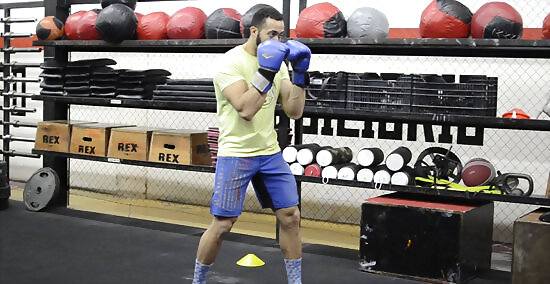
As soon as your fist reaches full extension, quickly pull it back to its original position. "Quickly" being the keyword here. You can either bring your back foot forward, encroaching on your opponent's space, or step back, putting the weight again on your back foot. But don't step back as you throw the jab, or it won't have any power. Tighten up your fist only upon impact. If you do it beforehand, you lose speed and power. It also wastes energy. And right after impact, relax again. Resume your boxing stance or get ready for your next move.
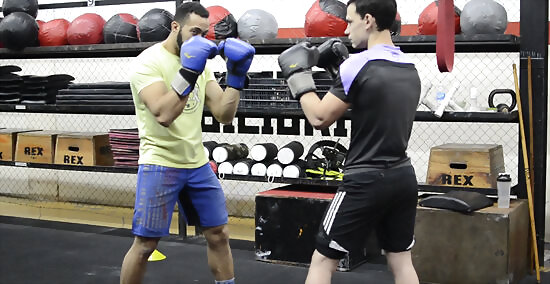
Expect some sort of counter-attack, with it being almost immediately. Your objective is if you are tall, to get in close enough to deliver a straight right cross. And, if you are smaller and more compact, you may need a few jabs to get in close enough for a Punch/hook, or uppercut. The jab will help you accomplish both of these. Even though it's not the strongest punch, it's the most useful. It's both defensive and offensive and is like a small spark of power with supremely accurate precision. It can interrupt combinations, gauge distances, and set you up for the knockout. It can also be very, very distracting. Experiment with yours in different circumstances.
Learning the Variations
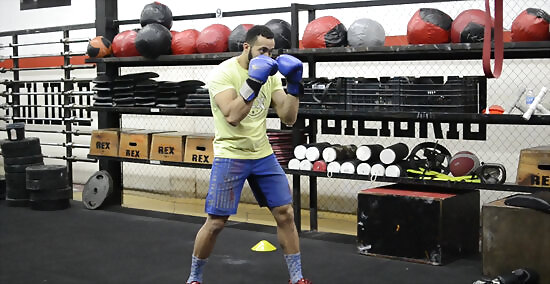
Use the tapper jab. This is really just a diversion. It distracts your opponent, forces him to go on the defensive, and gives you a second to set up another attack. You don't put much energy into the tapper jab -- hence its name. You just give your opponent a light tap while you rev up with your right. In this situation, it's common to tap your opponent's glove with your left and then throw a kick cross to his face or uppercut to his body. The tapper jab is the setup to a lengthier combo.
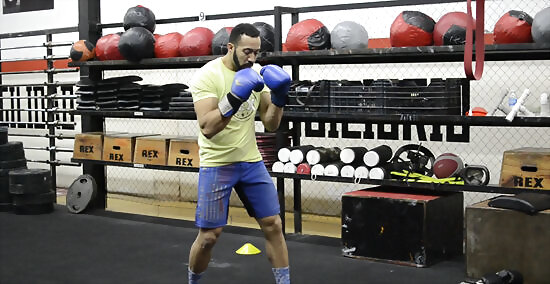
Go for the double jab. Since your opponent knows what a jab is usually used for, you can totally psych him out with a double jab. He's expecting you to jab with your left and then throw big with your right -- but no, no, no. With a double jab, you hit him left, left, and he won't know what hit him. Literally. A double jab can also break up the chaos when you and your partner are both caught in 1-2 combinations. You both jab with your left and when he goes for his right, your left blocks it and you get the point, even if it's a hook. And you can do the double moving forward, to the side, or backward, too.
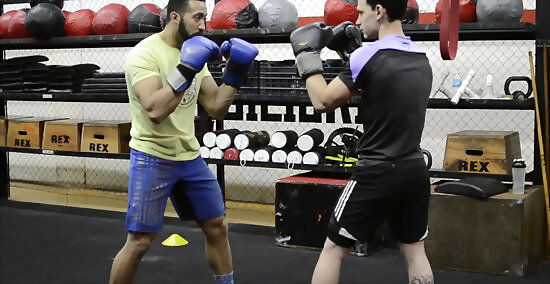
Use different levels. You could just jab your opponent in the face, but why stop there? Experiment with jabs high, medium and low. High to the face, medium to the body, and low -- where you're bending low at the knees, avoiding punches and attacking your opponent at his core. The principals all remain the same.
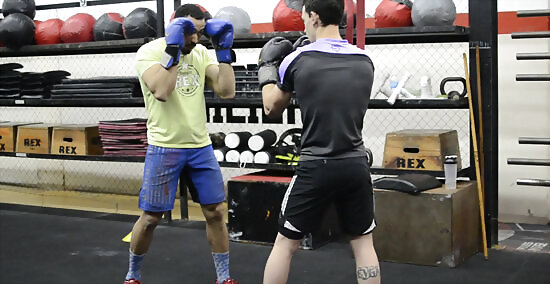
Use the counter jab. When your opponent throws his right at your face, you block it with your right and, since he is left unprotected, you throw a quick jab with your left and boom. Point. It sounds simple, but you have to make sure you're swift and yet relaxed. You have to counter as quickly as possible. No time to flinch! You've got to think on your feet with this one; if you're planning your counter or get tense with expectation, you'll slow down, lose energy, and your opponent will be able to read you. Stay in the moment, keep your head back in case he follows with his right, and step back if need be.
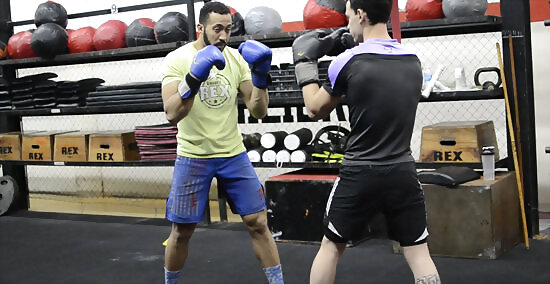
Jab, step back, jab. If you get a jab in and then step back, your opponent is probably throwing his right and missing. And then, like a fox, you get back in there and throw another jab -- something he probably won't be expecting. Agility and speed are important here, too. Make sure he can't read you and follow it up with a hard shot when he's vulnerable.
Avoiding Newbie Mistakes
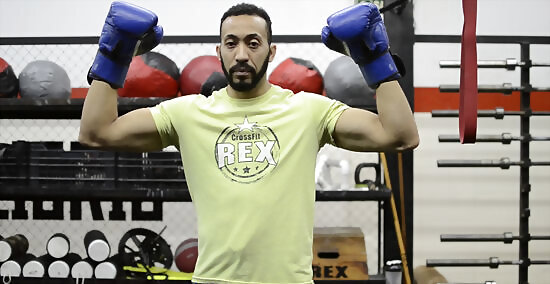
Keep your elbow aligned with your fist. If there's one thing you know about boxing, it's probably that you want to take a few hits as possible. So when it comes to jabbing, it's absolutely imperative that you keep your elbows in when you punch. Your opponent can easily see from side to side -- it's the up and down that's harder to spot. If your elbows are flailing at your sides, you'll be asking for it. Only thing on the up-down plane. There is no left and right when it comes to your elbows. When you think of the punch as coming from your body and not your fist, this is easier to maneuver.
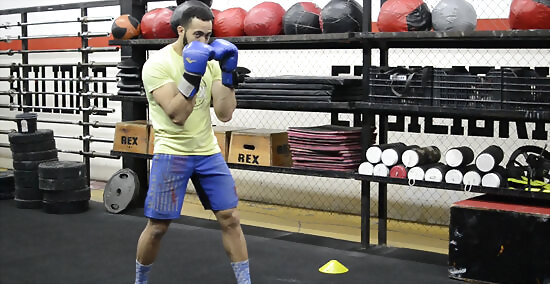
Don't launch your weight. Yes, a punch comes from your legs, hips, and core. If you just "push" out your punch, there won't be any power behind it. But at the same time, you are, by no means, launching your weight forward. The bag might show that you have force, but any real-life opponent will be able to quickly get an attack in when you're all off balance and tense. Weight does not equal power. Plenty of muscly guys get to the gym and tense up their muscles and think that's how it's done -- and then they run out of gas and have no defensive game. Those small, spindly boxers have the gusto for a reason. Think of a steel rod running through the backside of your body. It'll keep you from compromising form and technique.
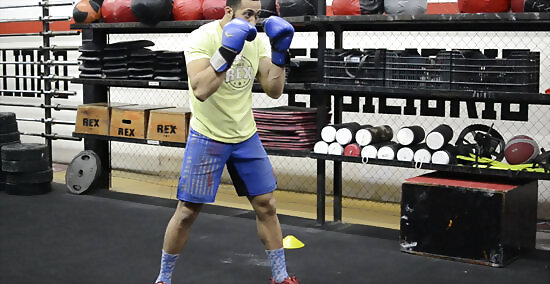
Don't just rely on your arms. Most of your power comes from the transfer of weight and the movement upward through your core. You put your weight forward, it moves up your body, and out through your arm. If you're just punching with your arm, you're making minimal impact. The only thing that is in your arm -- your hand, actually -- is the final snap, like that whip cracking. An upwards snap should be felt through your knuckles, sealing the deal.
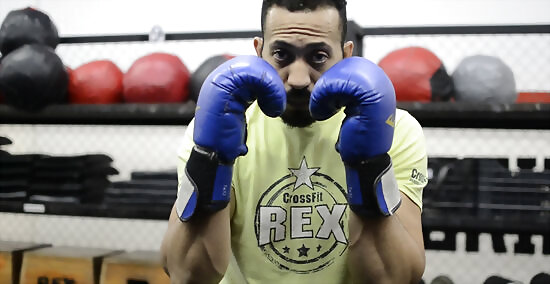
Punch through. If you're remaining relaxed up until the point of impact and rotating your arm, palms down, shoulder toward your chin, you should have a natural sense of power. Use that sense to punch through whatever it is you're up against. Not at, not on, through. Your energy and force does not stop once you hit your opponent -- you need to feel that energy to whip your arm right back into place for the next point.

















Comments
0 comment